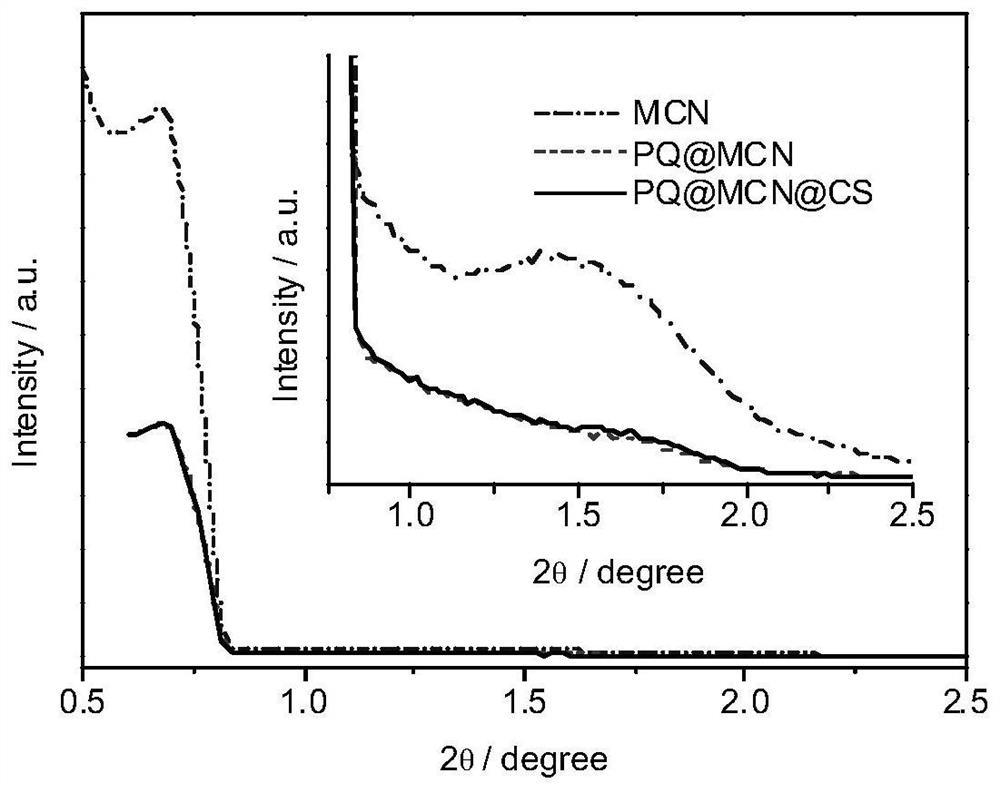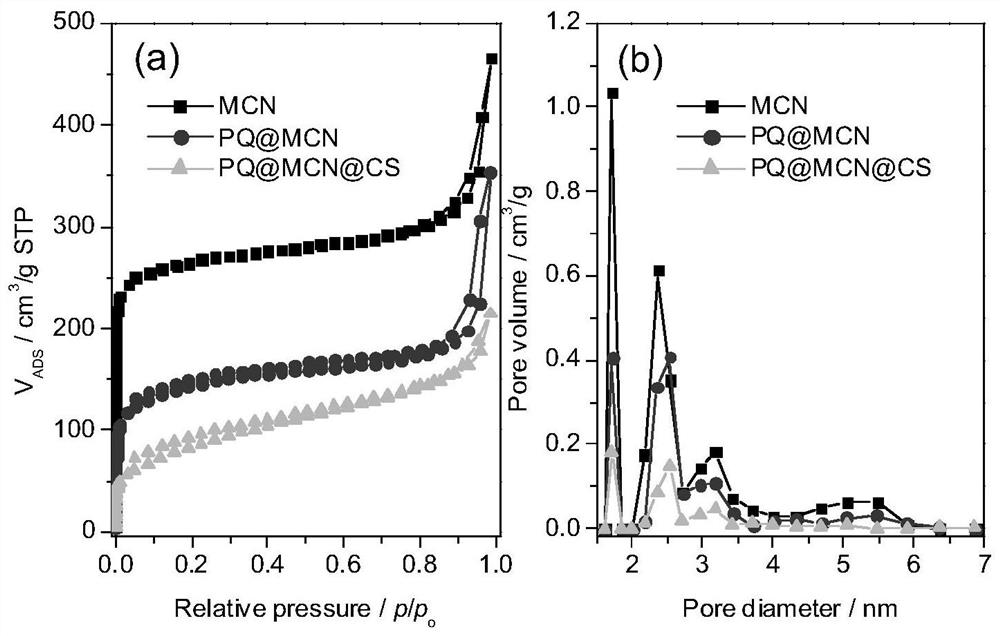Preparation and application of chitosan-encapsulated mesoporous carbon nano herbicide
A herbicide, chitosan technology, applied in herbicides and algicides, applications, biocides, etc., to achieve the effect of unaffected morphology, large specific surface area, and reduced lethal toxicity
- Summary
- Abstract
- Description
- Claims
- Application Information
AI Technical Summary
Problems solved by technology
Method used
Image
Examples
Embodiment 1
[0033] Embodiment 1 A kind of preparation method of the mesoporous carbon nano-herbicide encapsulated by chitosan
[0034] Include the following steps:
[0035] (1) Add 0.6g of phenol and 2.1mL of formaldehyde solution (mass fraction is 37%) to 15mL of 0.1M NaOH aqueous solution, stir at 70°C for 0.5h to obtain a low molecular weight phenolic resin; then add 0.96g of three The colloidal solution prepared by dispersing the block copolymer Pluronic F127 in 15mL of water was stirred at a low speed of 69°C for 2-4h; then 50mL of water was added to dilute the solution, and the stirring was continued for 16-18h. Stop the reaction when the precipitate appears, let it stand until the precipitate gradually dissolves, measure 17.7mL of the obtained solution, add it to the reaction kettle, add 56mL of water to dilute the solution, and react at 130°C for 24h. After cooling to room temperature, wash with water three to four times, centrifuge to collect and dry the crude product; then carb...
experiment example 2
[0041] Experimental Example 2 Pesticide Controlled Release Test:
[0042] Weigh multiple equal amounts of 5 mg PQ@MCN@CS nano-pesticide formulations, place them in dialysis bags, and then place them in 0.1% Tween-80 aqueous solutions at pH 2.0, pH 3.0, pH 5.0, pH 7.4 and pH 9.0 0.2mL samples were taken at different time intervals, and an equal volume of corresponding fresh solution 0.2mL was added, and determined by HPLC. In addition, pH 3.0 and pH 2.0 + different temperature (25, 37, 42 and 50°C) dual stimulus-responsive controlled release pesticides were designed, and the determination steps were the same as above.
[0043] Figure 4 is the acid / alkali response controlled release curve of PQ@MCN@CS nano-pesticide formulation: after 14 days, the cumulative release rate of paraquat in the control group without any stimulation was only 5.1%, almost no paraquat was released; at pH The cumulative release rates of paraquat at pH 9.0, pH 7.4, pH 5.0, pH 3.0 and pH 2.0 were 5.3%, ...
Embodiment 3
[0047] Embodiment 3 herbicidal effect test:
[0048] The aqueous dispersions of MCN@CS (3 mg / mL) and PQ@MCN@CS (1 and 3 mg / mL) (the solvent is 0.1% Tween-80 aqueous solution) were sprayed on outdoor planted Bermudagrass to investigate the effect on The influence of grass growth, in addition, 0.16mg / mL paraquat was used as a positive control, and 0.1% Tween-80 aqueous solution was used as a solvent control. The above-mentioned aqueous dispersions of nanoparticles with different concentrations and the control group were sprayed with Bermudagrass planted outdoors, and photographed to record the growth of Bermudagrass at different times after spraying.
[0049] Figure 7 It shows that the solvent control group and MCN@CS have no effect on the growth of Bermudagrass; the paraquat positive control group will show signs of withering on the second day after spraying (that is, one day of drug action), and as the action time increases, the weeding The effect is more and more obvious; ...
PUM
| Property | Measurement | Unit |
|---|---|---|
| size | aaaaa | aaaaa |
| size | aaaaa | aaaaa |
| diameter | aaaaa | aaaaa |
Abstract
Description
Claims
Application Information
 Login to View More
Login to View More - R&D
- Intellectual Property
- Life Sciences
- Materials
- Tech Scout
- Unparalleled Data Quality
- Higher Quality Content
- 60% Fewer Hallucinations
Browse by: Latest US Patents, China's latest patents, Technical Efficacy Thesaurus, Application Domain, Technology Topic, Popular Technical Reports.
© 2025 PatSnap. All rights reserved.Legal|Privacy policy|Modern Slavery Act Transparency Statement|Sitemap|About US| Contact US: help@patsnap.com



